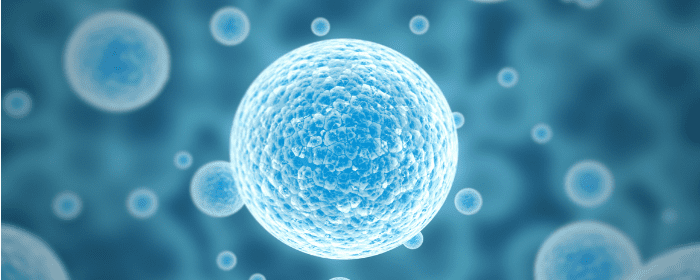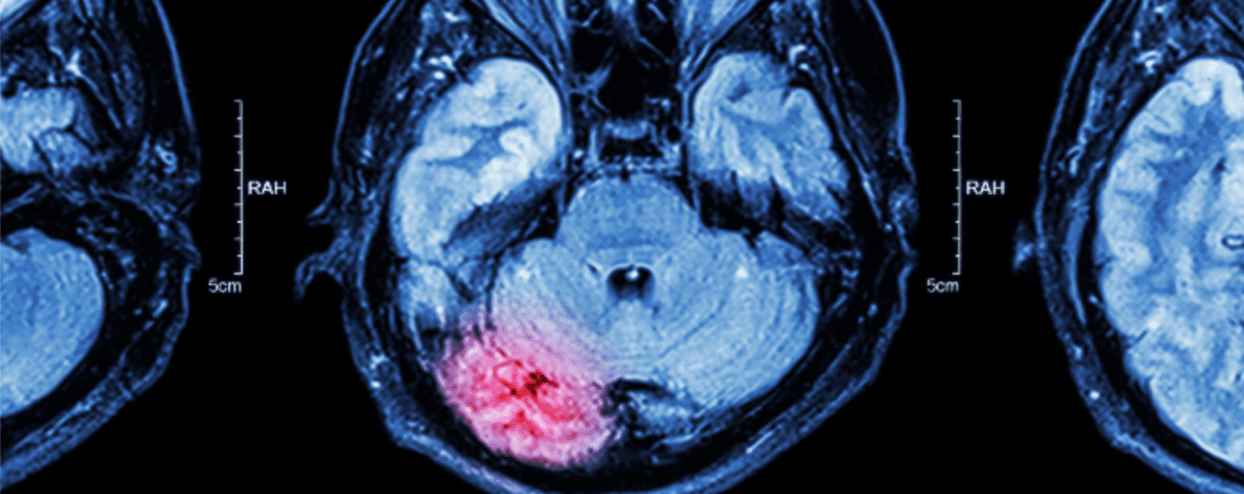
by Stemedix | Apr 5, 2021 | Chronic Pain, Pain Management
Spinal stenosis flare up occurs when the spaces in the spine become narrow, putting pressure on the spinal cord and nerves. Changes related to aging are a common cause for the condition, but it can also be a result of congenital factors; some people are simply born with a narrower spine. Other spinal conditions such as scoliosis can also be a risk factor for the condition.
There are two regions where spinal stenosis can occur: the lower back or the neck. Common symptoms include pain in the affected area, as well as numbness or weakness in the arms and legs. Treatment for the condition may vary based on the severity of symptoms. For mild cases, doctors may simply recommend routine monitoring and home remedies such as pain relievers, heat and cold therapy, and exercise. In more severe cases, treatments such as a decompression procedure may be recommended to remove portions of ligaments that are compressing nerve roots. Spinal stenosis surgery is usually reserved for only the most severe cases, including those with pronounced pain or loss of bladder control.
How Long Does a Spinal Stenosis Flare up Last
The recovery period for lumbar stenosis varies depending on the individual patient and the treatment approach implemented. While each case is unique, it is generally observed that most patients experience significant recovery from spinal stenosis within a timeframe ranging from six months to one year after initiating treatment. It is important to note that specific circumstances, such as the severity of the condition and the effectiveness of the chosen treatment methods, can influence the recovery duration.
Avoiding Spinal Stenosis Flares
Because spinal stenosis is largely due to age-related factors, including bone and muscle loss, there’s no way to completely guarantee full prevention of spinal stenosis. With that being said, certain factors could contribute to the condition or cause flare-ups in existing cases. Here are some factors to watch for:
- Being overweight: Carrying extra weight puts excess strain on the spine. Maintaining a healthy weight through a nutritional diet and exercise are good ways to control symptoms or minimize your risk for the condition.
- Smoking: Researchers have established a link between smoking and back conditions that require spinal surgery. In particular, smoking appears to increase the risk of a narrowed lower spinal space. Smoking cessation can help reduce the risk.
- Poor Posture: Your posture plays an important role in maintaining spinal health. Poor posture can shift the alignment of the tissues in the back, aggravating preexisting conditions such as spinal stenosis. Using ergonomic furniture and taking breaks to sit or stand frequently throughout the day helps promote good posture.
- Inactivity: Exercise keeps the muscles that support the spine strong, and can also help you maintain flexibility and balance. Periods of inactivity can have the opposite effect and may contribute to flare-ups.
Tracking your symptoms is important with spinal stenosis flare up, as the condition can develop slowly over time. Lifestyle treatments and avoidance of known triggers may help to control your pain for a long time, but if you tried these methods and are still experiencing discomfort, it may be time to consider other treatment options.
Some patients are discovering the healing potential of stem cell therapy options. The cells have the potential to help with inflammation, pain, and regeneration of tissues. It is important to have a regenerative medicine spine specialist review candidacy to determine if the outcome is optimal for the patient. Discover if you are a candidate with a complimentary assessment.
Schedule Your Appointment
If you’re seeking an advanced and effective treatment for spinal stenosis, look no further than Stemedix. We are a trusted provider of stem cell therapy, offering a cutting-edge solution for individuals living with spinal stenosis.
Our stem cell treatment for spinal stenosis involves the utilization of mesenchymal stem cells, which have the remarkable ability to differentiate into various cell types and stimulate tissue repair. These stem cells are derived from your own body’s adipose (fat) tissue or bone marrow, ensuring compatibility and minimizing the risk of rejection or adverse reactions. Contact us today!

by admin | Apr 2, 2021 | Stem Cell Therapy, Mesenchymal Stem Cells, Osteoarthritis, Stem Cell Research
Osteoarthritis (OA), the most common form of arthritis, affects over 32 million people in the U.S. each year. Characterized by a progressive degeneration of cartilage resulting in pain, stiffness, and swelling in the joints, and most frequently occurring in the hands, hips, and knees, OA has no pharmacological, biological, or surgical treatment to prevent progression of the condition. The authors of this case report focus specifically on potential treatment options for OA of the knee.
With the emergence of stem cell-based therapies for a multitude of health conditions, stem cells, and specifically mesenchymal stem cells (MSCs), have demonstrated immunosuppressive activities that could prove beneficial in supporting the regeneration of cartilage tissue in and around joints in the body.
Research has demonstrated that MSCs are effective in differentiating into essential connective tissues like fat, cartilage, and bone; MSCs have also demonstrated immunomodulatory and anti-inflammatory effects, the ability to self-renew, and plasticity, making MSCs a potentially powerful treatment of OA in the knee (and other parts of the body).
This specific case study details cartilage regeneration in the knee of a 47-year-old woman diagnosed with OA when treated with bone marrow-derived MSC cells. For the course of this treatment, autologous MSCs were collected from bone marrow harvested from the iliac crest. After processing and preparing the MSCs, the sample was confirmed to be free of microbial contamination and was prepared and transplanted into the patient’s knee joint.
Periodic follow-ups with the patient revealed no local or systemic adverse events associated with the MSC transplant procedure. The authors of this case report found that the patient’s functional status of her knee, the number of stairs she could climb, reported pain on a visual analog scale, and walking distance all improved in the two months following the MSC transplant procedure.
Additionally, twelve months after the transplant, the patient demonstrated a positive change in WOMAC (3 to 2), a continued increase in the number of stairs climbed (5 increasing to 50), and visual analog (80 mm to 11 mm). The patient also demonstrated improved gelling (or the amount of time it takes for synovial fluid to thicken as a result of rest) in the knee from 8 minutes to 30 minutes; knee flexion also increased 20° (100° to 120°). Periodic MRIs taken after the transplant procedure demonstrated an extension of the repaired tissue over the subchondral bone.
Mehrabani, et al. conclude that MSC transplantation for treating OA in the knee appears to be a simple, safe, effective, and reliable treatment option that has demonstrated pain relief, improved quality of life, and significantly improved quality of cartilage without hospitalization, pharmaceuticals, or surgery.
Source: (n.d.). The Healing Effect of Bone Marrow-Derived Stem Cells … – NCBI – NIH.; from https://www.ncbi.nlm.nih.gov/pmc/articles/PMC5003953/

by admin | Mar 19, 2021 | Stem Cell Therapy, Autoimmune, Mesenchymal Stem Cells
Autoimmune diseases occur as a result of the body’s natural immune system mistakenly attacking and damaging healthy, normal cells and tissue. Currently, an estimated 60 different autoimmune diseases affect between 5 and 8 percent of the U.S. population[1]; making it one of the largest disease burdens faced today.
Divided into two distinct categories, autoimmune diseases are typically classified as organ-specific or systemic autoimmune diseases. Systemic autoimmune diseases include systemic lupus erythematosus (SLE), rheumatoid arthritis, systemic sclerosis, and polymyositis; organ-specific autoimmune diseases include Hashimoto thyroiditis, Graves disease, type 1 insulin-dependent diabetes, and pernicious anemia.
Currently, most cases of autoimmune disease are treated with corticosteroids, cyclophosphamide, azathioprine, and/or methotrexate. While all of these medications have been demonstrated to be effective in treating autoimmune disease in some capacity, improvement is not universal; these medications have also been associated with known toxicities.
As research continues to explore the immune system and various autoimmune disorders, it appears that adult stem cells offer promise for effective, non-pharmacological treatment of autoimmune disease.
The author of this review points out that while many animal studies exploring the potential benefits of autologous and allogeneic hematopoietic stem cells (HSCT) exist, the danger associated with allogeneic bone marrow transplants has limited studying these transplants to only those subjects with severe autoimmune disorders that are not responding to other, more proven treatments.
The review also focuses on the treatment of autoimmune disease with mesenchymal stem cells (MSCs). Specifically, the author points to several in vitro studies demonstrating the immunomodulatory properties of MSCs as well as their immunosuppressive effects on MHC-mismatched lymphocyte proliferation. This form of MSC transplantation produces relatively short effects but has proven to be profoundly different from HSCT. Specifically, this procedure does not require the patient to be immunosuppressed in advance of transplantation and produces a therapeutic effect in the affected organ as a result of the homing of MSCs. Studies have demonstrated that MSC transplant has reversed multiorgan dysfunction in SLE mice and humans while also demonstrating stable 12 – 18-month disease remission. As a result, further clinical trials exploring autologous bone marrow MSC (BM-MSC) are currently ongoing.
With the difficulty and risk associated with BM-MSC transplantation, the author points out that since adipose tissue is readily available and easily obtainable, adipose tissue-derived MSC (AT-MSC) are being explored for their potential as a regenerative treatment and wound healing option. Early studies have demonstrated AT-MSC to have immunosuppressive properties that reduce experimental autoimmune encephalomyelitis (EAE), decrease spinal cord inflammation, and significantly ameliorate the severity of colitis and arthritis. In fact, there is convincing evidence indicating that AT-MSC transplant produces therapeutic results comparable to MSCs derived from bone marrow.
At the same time, gene therapy research exploring the use of stem cells as a vehicle in autoimmune disease demonstrated delivery of brain-derived neurotrophic factor (BDNF) genes in an animal model of multiple sclerosis using bone marrow stem cells and human insulin gene transfected BM-MSC therapy in murine type 1 insulin-dependent diabetes has demonstrated positive results, including decreased blood glucose level, improved secretion of human insulin in serum and liver, and delayed onset and clinical severity of EAE.
As research continues to explore the benefits of adult stem cell therapy for the treatment of autoimmune disease, and with genetic therapy showing promising treatment options, researchers are optimistic of the benefits provided through a combination of stem cell and gene therapy.
Source: (n.d.). Adult Stem Cell Therapy for Autoimmune Disease – NCBI – NIH. Retrieved from https://www.ncbi.nlm.nih.gov/pmc/articles/PMC4021767/
[1] “Autoimmune Disease – National Stem Cell Foundation.” https://nationalstemcellfoundation.org/glossary/autoimmune-disease/. Accessed 9 Mar. 2021.

by Stemedix | Mar 15, 2021 | Traumatic Brain Injury, Stem Cell Therapy
Traumatic brain injuries (TBI) occur from an outside force, and are commonly caused by sports injuries and car accidents. In many cases, symptoms can improve over time with the help of therapy. In some cases, however, it’s possible for symptoms to worsen over time. Here’s a closer look at why some cases improve and others appear to decline.
Secondary Brain Injury: In certain patients, complications develop after the initial injury, such as an infection or hematoma. The injury may also cut off blood to the brain, causing brain cells to die. The effects of these secondary brain injuries may not appear right away, which is why some patients’ symptoms seem to worsen over time.
Chemical Events: A brain injury can also trigger chemical changes which lead to worsening symptoms. For instance, the patient may develop an abundance of neurotransmitters, causing brain cells to become overstimulated and eventually die off.
Failure to Receive Treatment: Lastly, if a patient fails to receive proper treatment to facilitate healing following their brain injury, their symptoms are likely to worsen.
How to Minimize the Risk of Worsening Symptoms
Experts don’t know why symptoms worsen in some TBI cases and not others, but there are still factors within your control that can promote optimal outcomes. Here are a few options to consider.
Attend Therapy
Many people recovering from TBI need a combination of physical, speech, and occupational therapy. These rehabilitative programs help you rebuild physical strength, support blood flow to the brain, sharpen your mental skills, and reestablish your daily routine. Most importantly, they keep the brain and body active and can help prevent worsening symptoms.
Keep Your Brain Stimulated
Your brain is a muscle that can benefit from regular exercise. If there’s a type of puzzle you enjoy, such as sudoku or crosswords, try doing some during your downtime. You might also consider music or art therapy to engage your brain. Stimulating your brain encourages it to produce neuropathic growth factors, which kickstart the development of brain cells. Of course, you’ll want to follow your practitioners’ recommendations and avoid overstimulation during early recovery.
Engage Your Neuroplasticity
Neuroplasticity is the mechanism the brain uses to create neural pathways which allow healthy brain tissue to take on functions the damaged portions can no longer accommodate. Repetition is one of the simplest yet most effective ways to engage neuroplasticity. Thus, if there’s a skill you want to remaster, you’ll need to practice it often. Over time, it will start to become easier.
Get Support
TBI recovery can be frustrating, especially if you’ve reached a plateau. Support groups are available to encourage you to overcome plateaus and discuss the ups and downs with first-hand knowledge. Whether you choose to join an online community or meet with a group in person, you may find that sharing your experiences in a supportive setting is a great outlet for the emotional and mental challenges that come with recovery.
Although it’s impossible to say for sure whether someone’s TBI symptoms will worsen or improve with time, the steps above won’t hurt in either case. By staying mentally and physically active and pursuing treatments such as therapy, individuals who have experienced brain injuries can support the best possible outcomes in their recovery. Patients are discovering the alternative option of stem cell therapy to help manage symptoms and assist in the healing process. In particular, stem cells can slow or halt further brain damage and promote healing by reducing inflammation and achieving a tissue-protective effect. If you would like to learn more then contact us today to speak with a care coordinator.

by Stemedix | Mar 8, 2021 | Parkinson's Disease
Receiving a diagnosis of any chronic condition can be overwhelming, and Parkinson’s disease (PD) is certainly no exception. While it’s normal to feel a range of emotions after you’re first diagnosed, you might also feel a sense of relief to have a concrete diagnosis. And, with an accurate diagnosis, you can also begin your pursuit of a comprehensive PD management plan, which begins with the following steps.
Team Up with a Specialist
First and foremost, you’ll want to seek out a medical professional who specializes in movement disorders. These professionals focus on emerging treatments and can help you manage any persistent symptoms which aren’t responding to medications. You can still see your primary care provider, but these neurologists have extensive knowledge of Parkinson’s therapies and are well-worth researching.
Allow Time to Adjust
There are countless resources online to help you navigate the newly diagnosed phase, but don’t feel as if you have to learn everything right away. Give yourself time to process the news first. Then, consider joining online groups or local communities to learn more about PD management. The National Parkinson Foundation and Michael J. Fox Foundation for Parkinson’s Research are great resources to start with.
Share on Your Terms
In time, you’ll likely want to tell everyone in your close circle about your diagnosis. Telling colleagues about your PD can help squash rumors and may simplify matters such as adjusting your schedule for doctors’ appointments. You’ll also want to have ongoing conversations with your partner and children to keep them in the loop about how you’re feeling and what they can do to support you.
Stay Active
Research supports regular exercise for people with Parkinson’s Disease and even shows that physical activity can help improve PD symptoms. People who started exercising 2.5 hours a week earlier after their diagnosis experienced a slower decline than their peers, for instance. While there’s no precise formula for exercising for PD, experts suggest a routine that blends stretching, cardio, and strength.
Stay Social
It can be tempting to withdraw from activities and others after being diagnosed with Parkinson’s Disease. Yet, mental and social wellness can decline when you disengage. To that end, you may want to consider staying in the workforce if you’re still active in your career. You should also continue pursuing the social activities you enjoy, and may even want to think about joining new clubs or programs. These outlets can help promote mental and emotional wellbeing. If you want to learn more about your options after being newly diagnosed with Parkinson’s Disease then contact a care coordinator today!






 St. Petersburg, Florida
St. Petersburg, Florida
